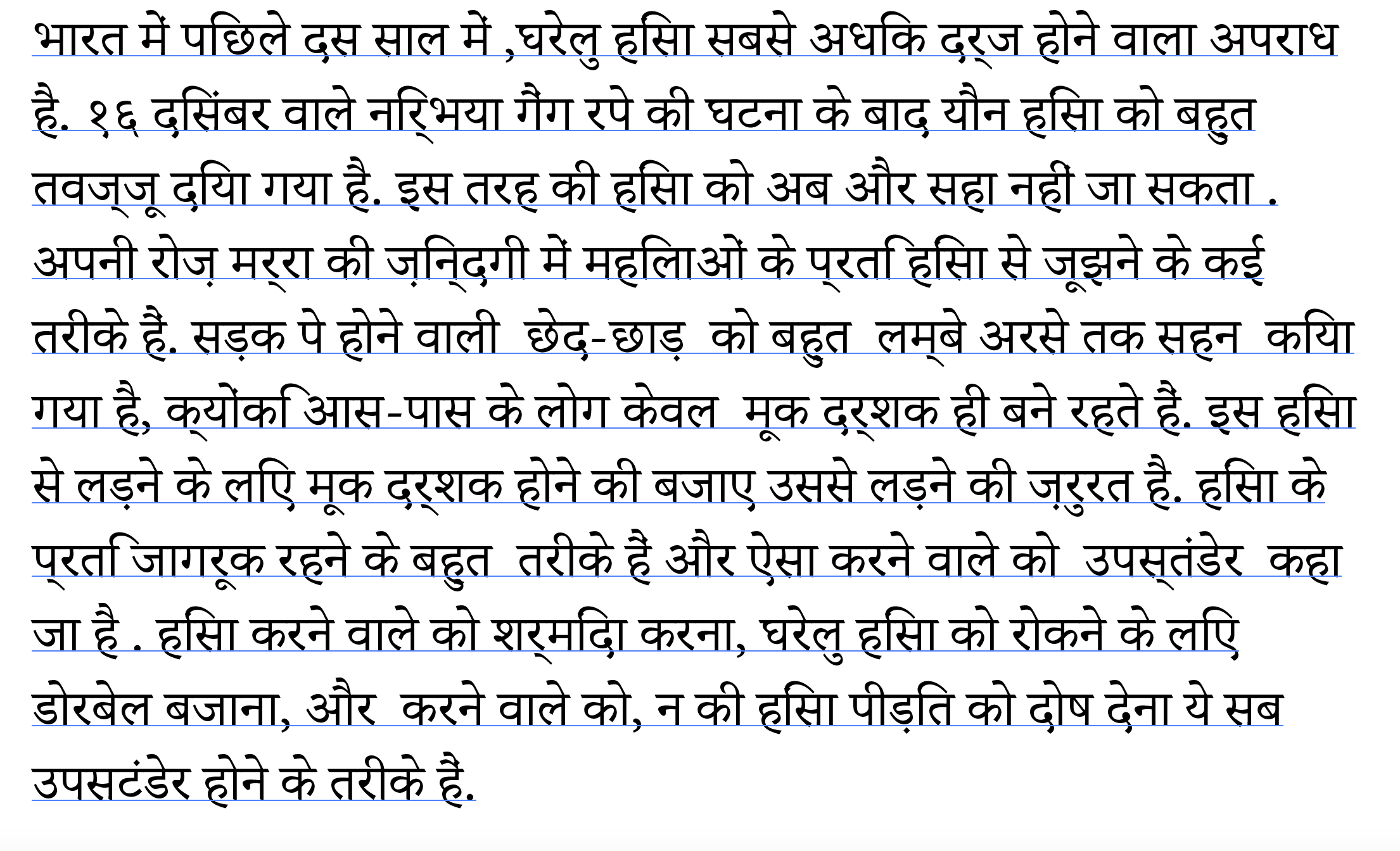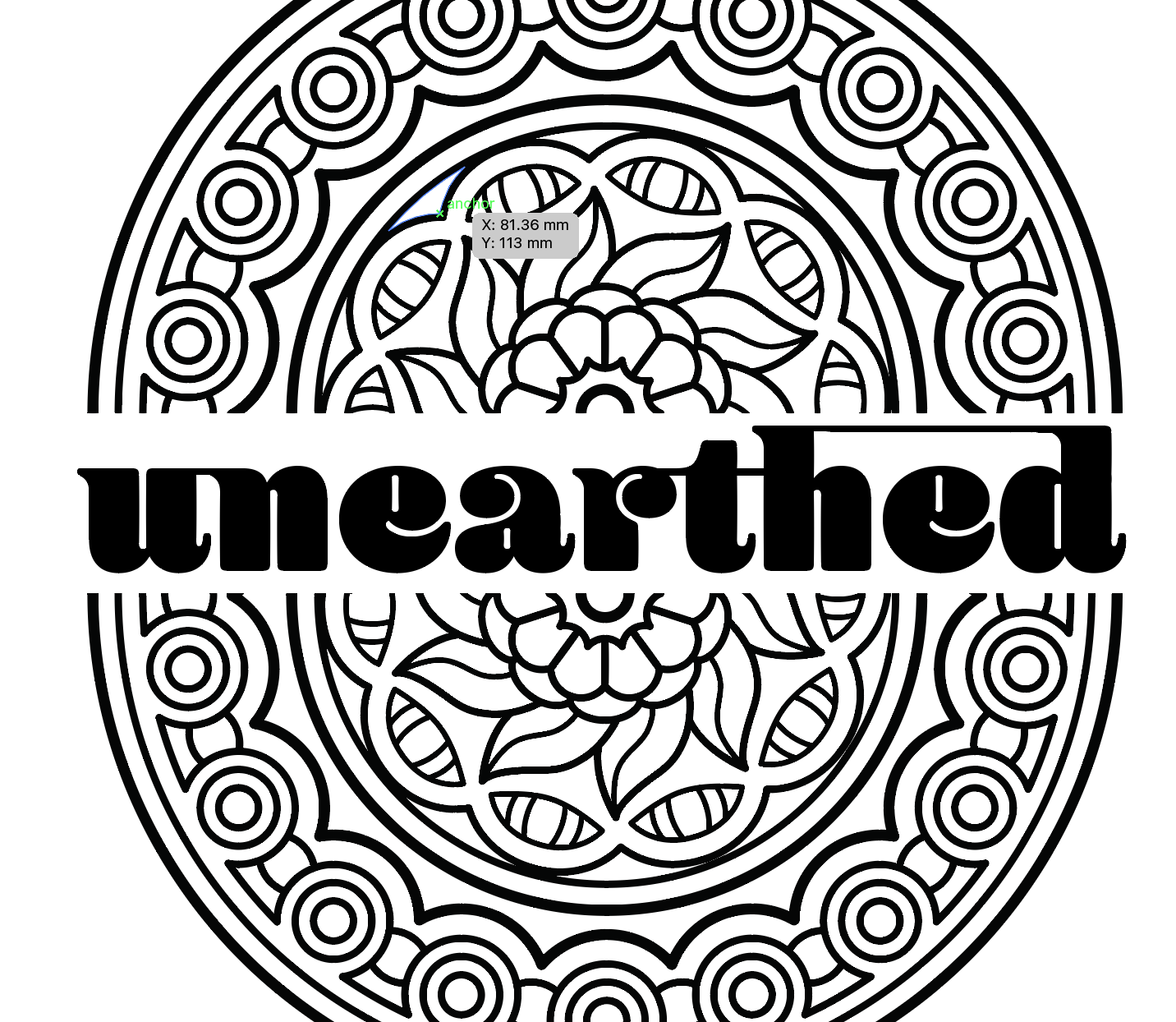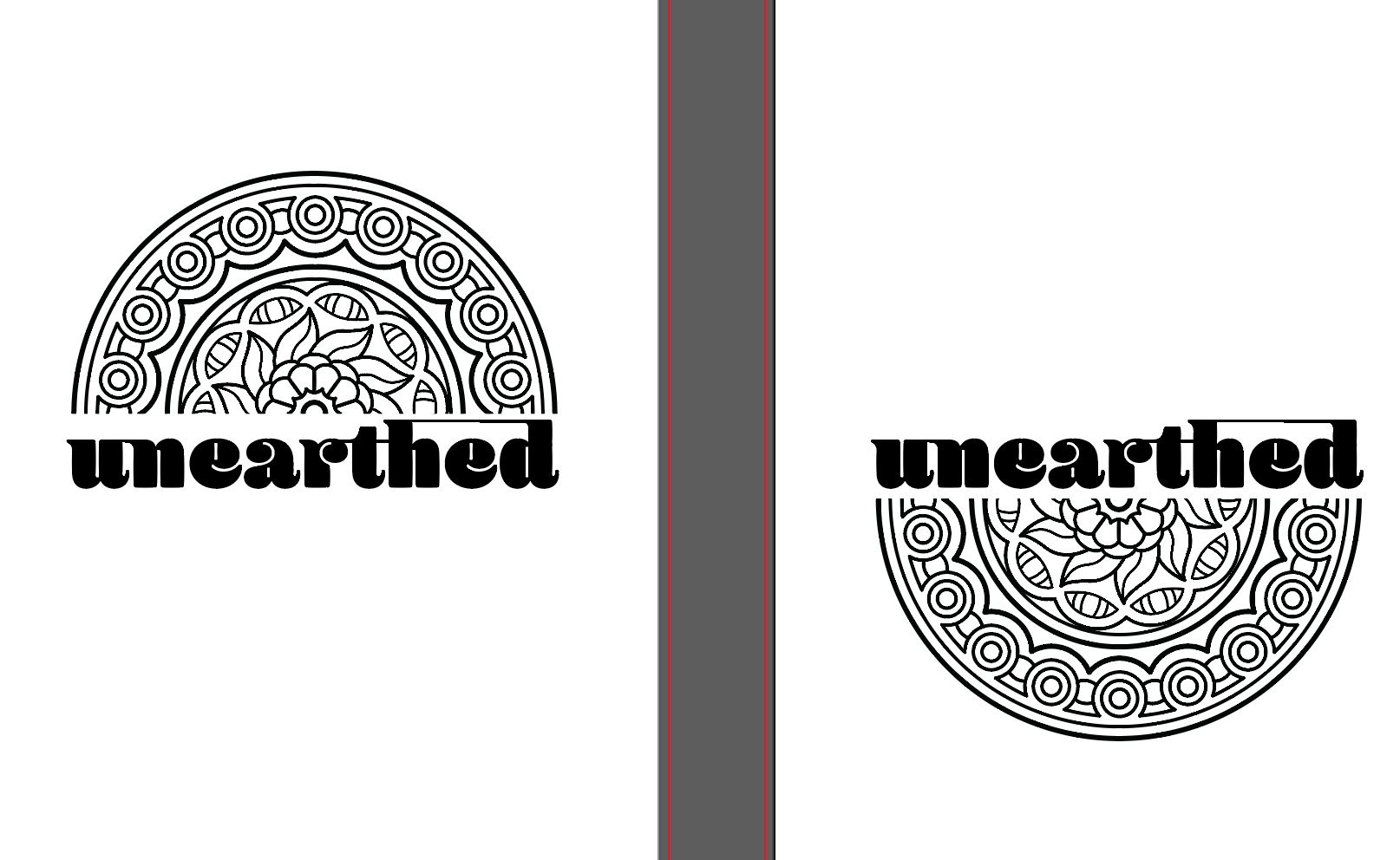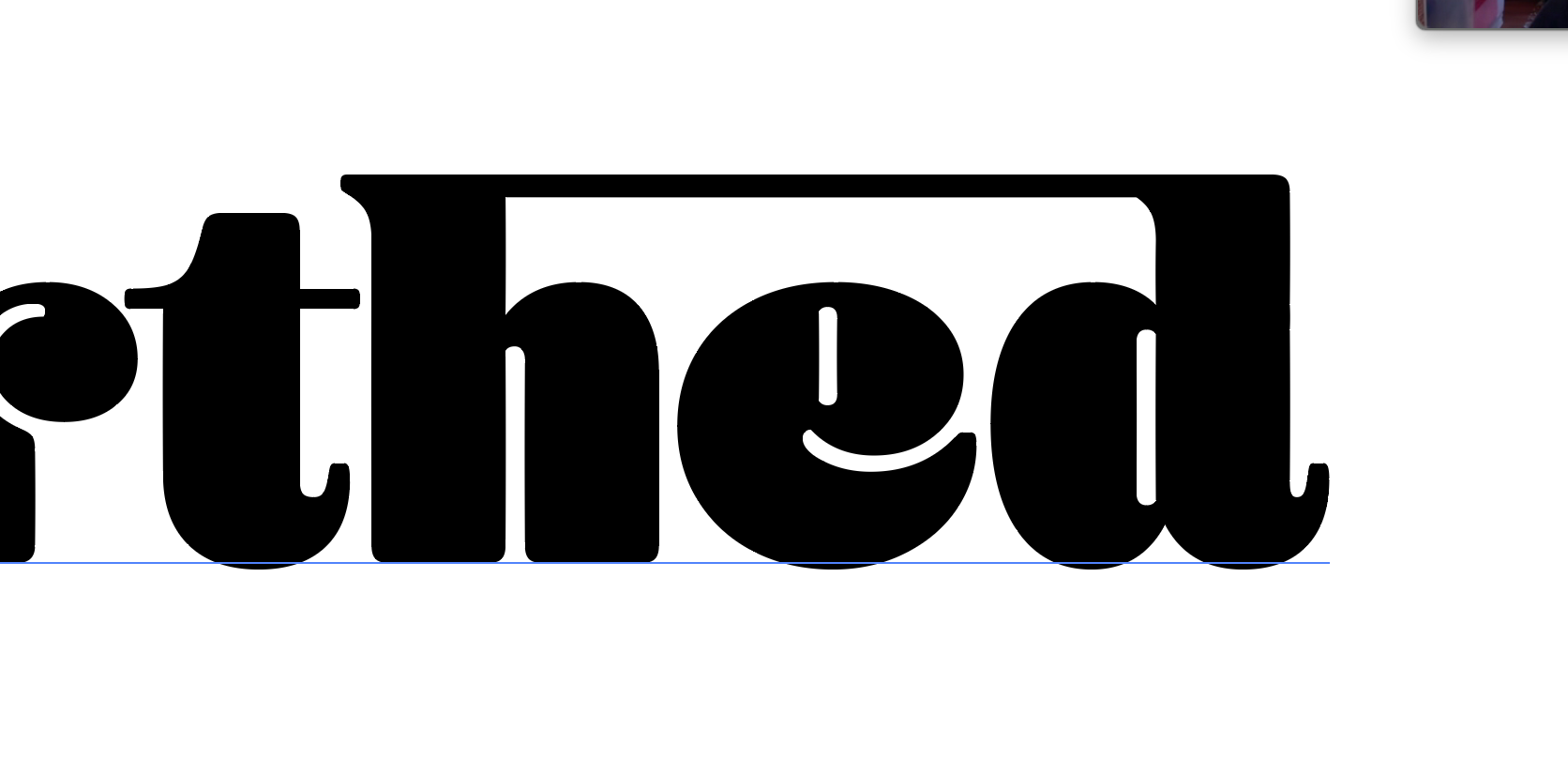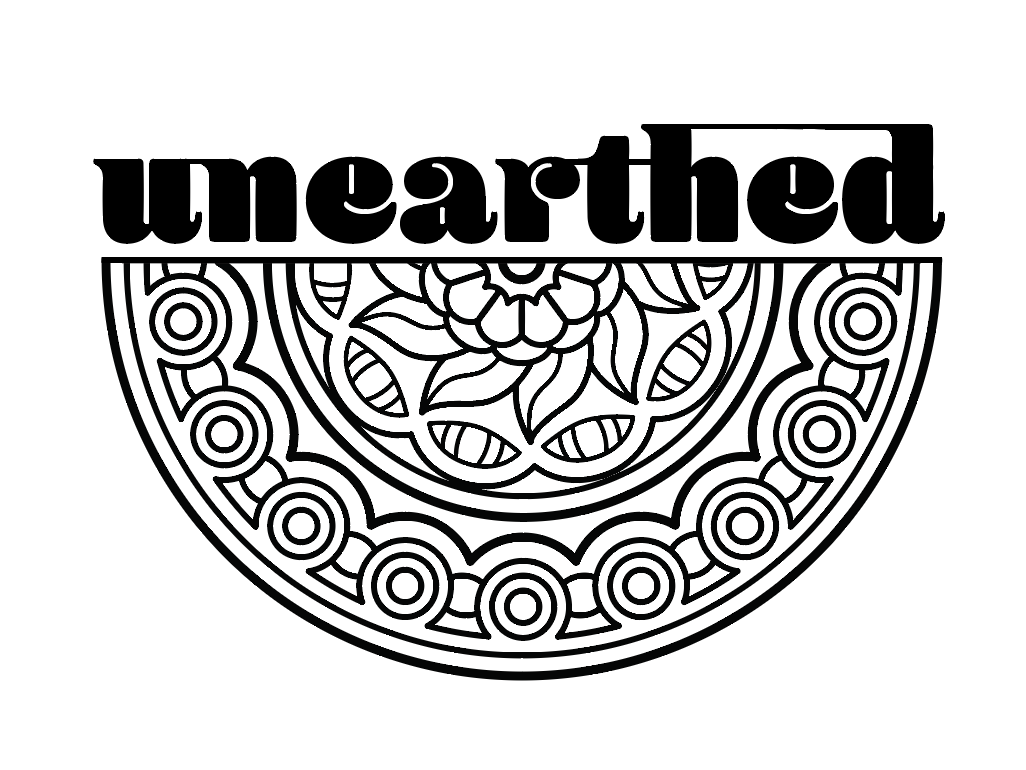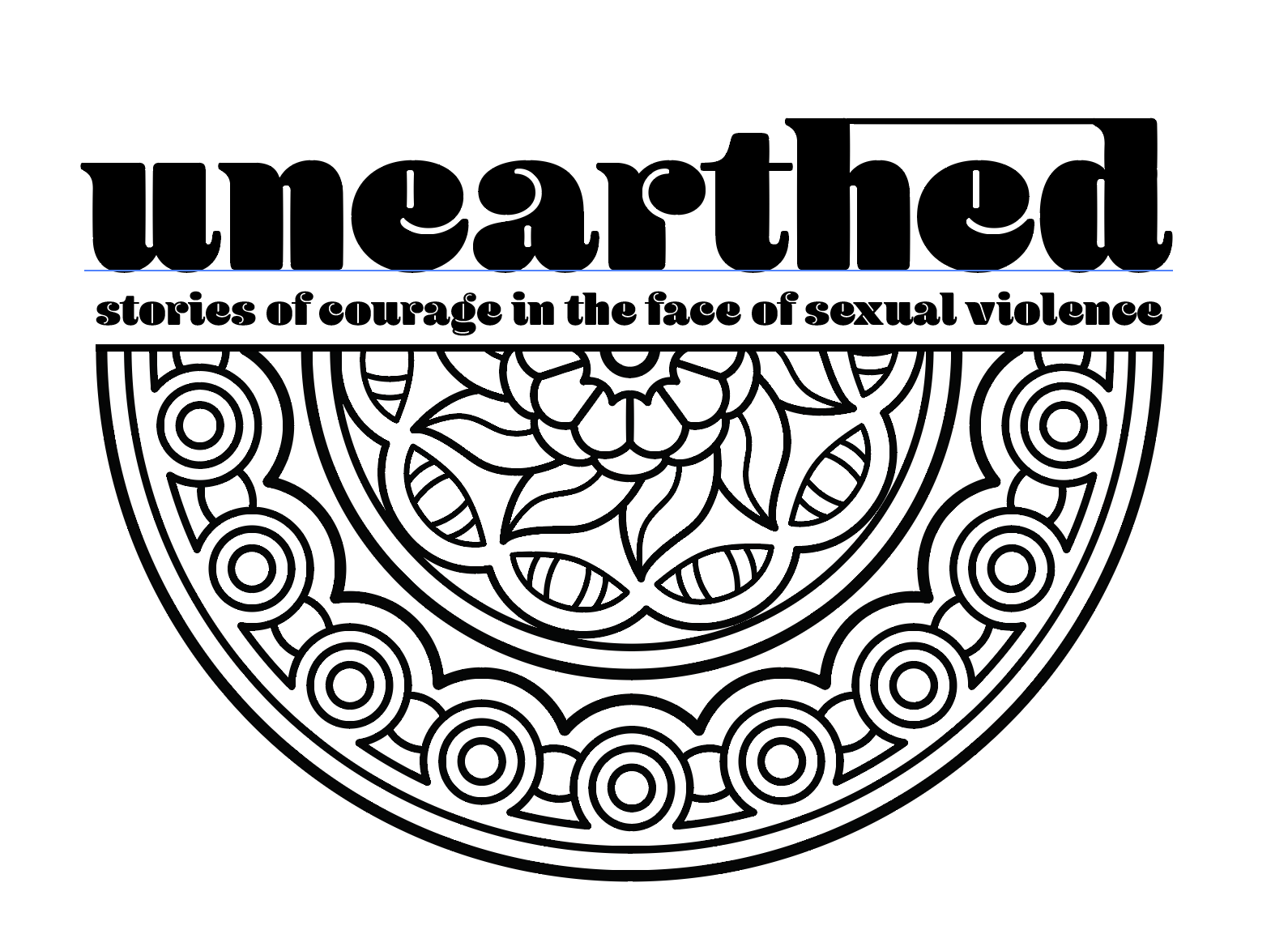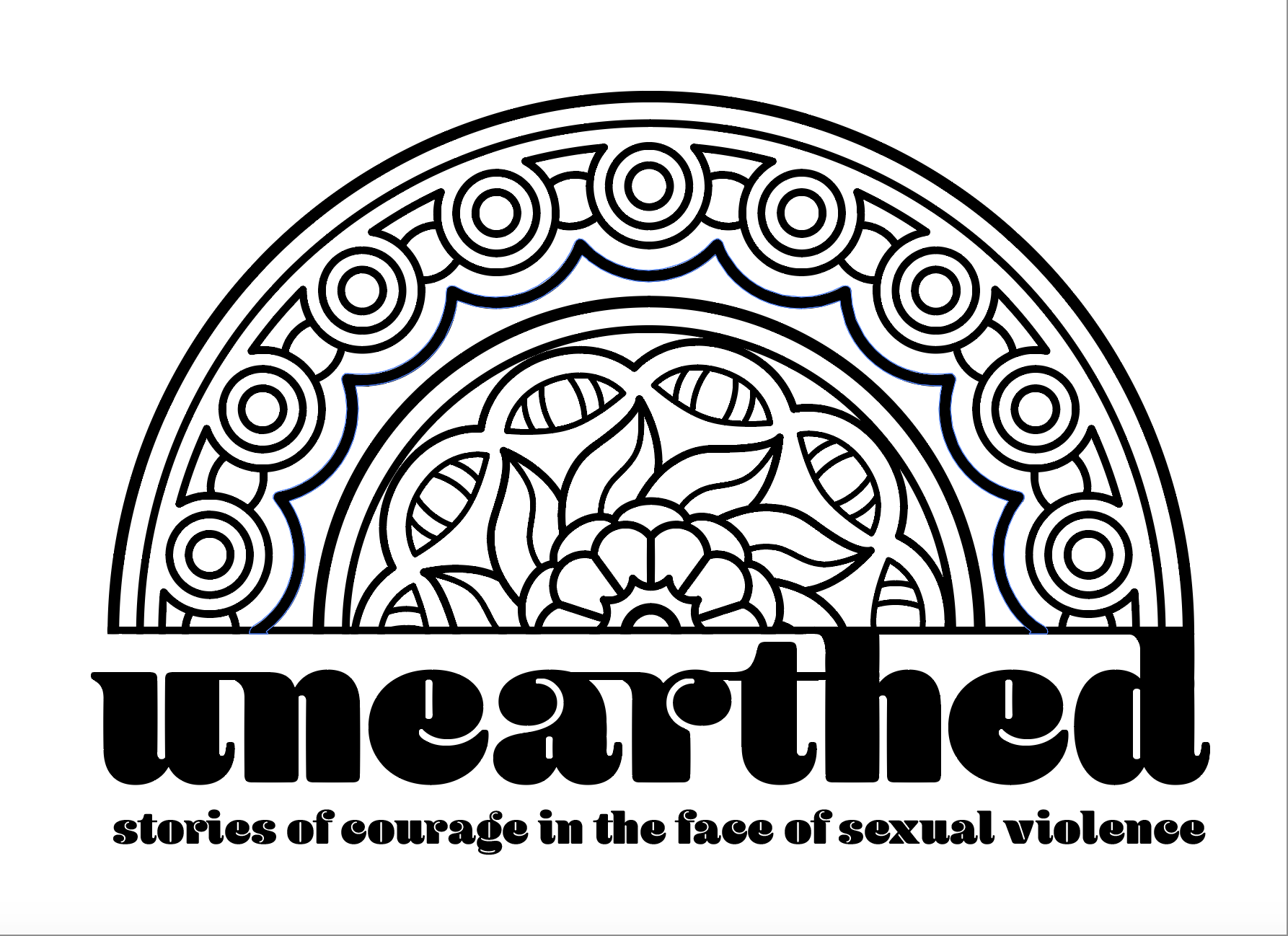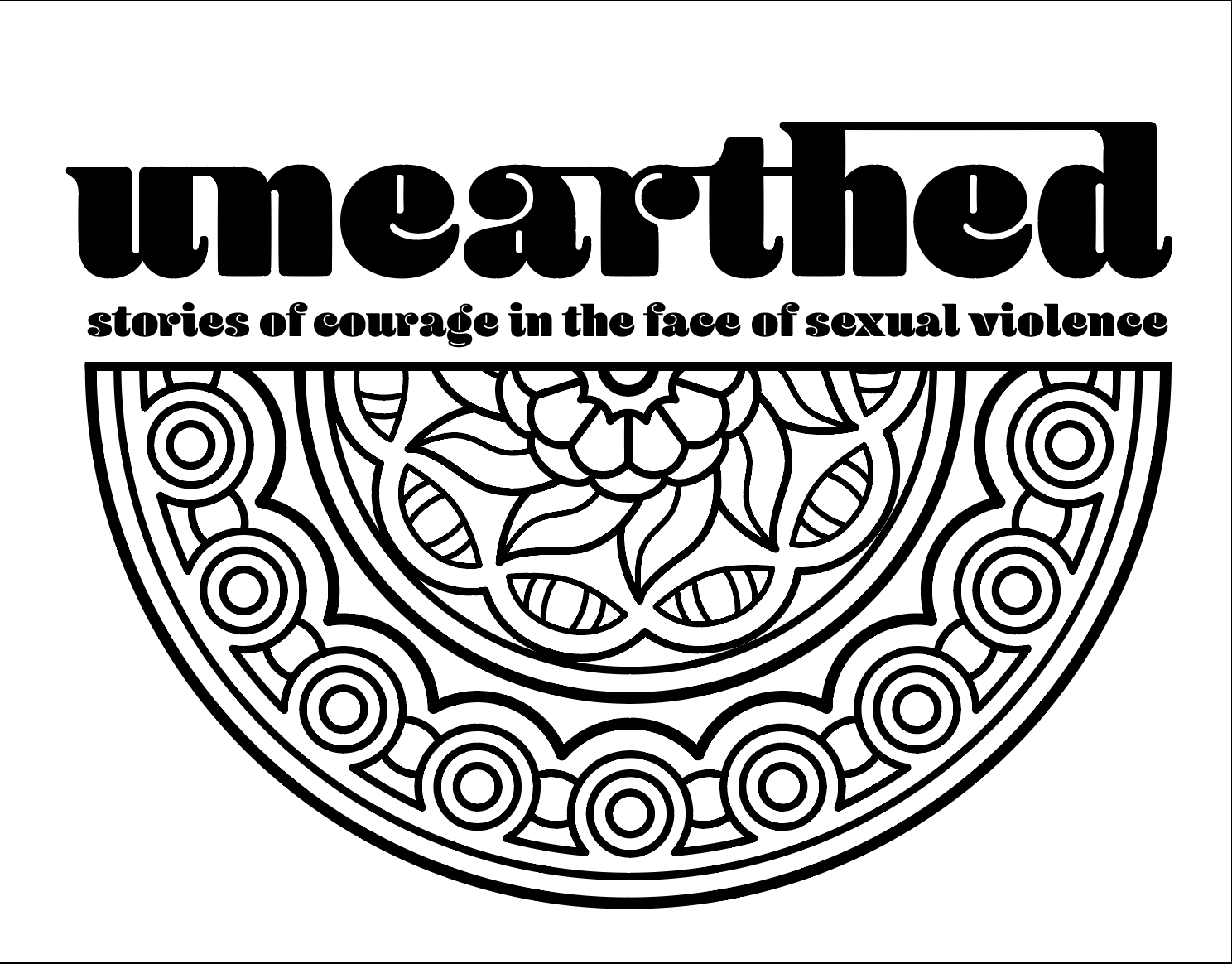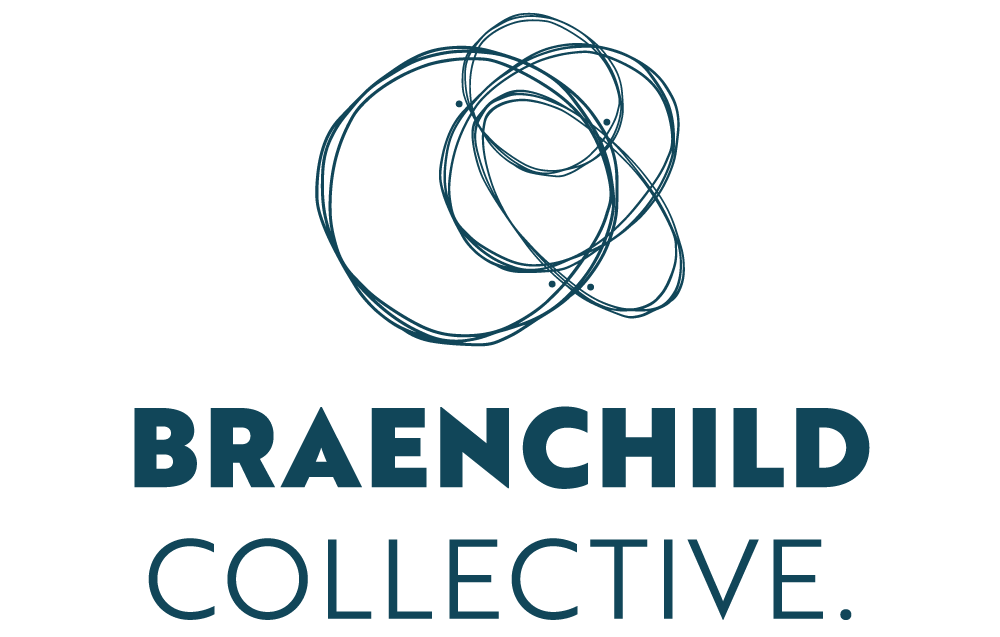Unearthed Typography: Heading
I have begun the process of typographic design for Unearthed: Stories of courage in the face of sexual violence with a textual analysis of the background information within the design brief. There are four main sections that I focused on:
- The background text on the partner organisation in India;
- The background information on PROOF's Legacy of Rape project;
- The background of the issue (provided by - TBA);
- Exhibition introduction text;
- The testimonies of the survivors.
I haven't gone through the text of the upstanders, because, after looking at all of this text, it became clear in which direction I wanted to steer the typographic elements: in order to explain this better, I will list the key words that were gleaned from each section.
Background of partner organisation:
- difficult position
- strength
- build capacity
- discrimination
- women
- girls
- bold
- dignity
- equality
- justice for all
- leadership
- mobilisation
- Eminent
- Indians
- Civil society
- action
- public
- just
- equitable
- marginalised
- communities
- social issues
- social justice
- poverty
The language in this section has, overall, a softer, more academic feel to it. You also strongly get the sense of who the people are behind the project, through words such as 'eminent'. Other key words to reinforce the idea of 'equitable social' justice are 'equiality', 'dignity' and 'marginalised'.
PROOF: Legacy of Rape text:
- rape
- weapon
- war
- campaigning
- survivors
- portraits
- testimonies
- gender
- violence
- cultural
- problem
- upstanders
- places
This text is taken from the overall Legacy of Rape project that is more geared towards highlighting the issue of rape used as weapon during times of armed conflict. Words such as 'campaigning', 'weapon' and 'rape' are key, but also so too are words that speak to the project's multimodal communication model, 'testimony' and 'portrait'. The language is stronger than the first group, but not inflammatory.
Background of issue:
- ample use
- prosecutions
- mass rape
- debatable criminal law
- personal space
- transforms life
- upsetting
- disturbing
- threatening experience
- inhuman
- troubles
- society
- beastly
- wake us up
- ugly truth
- atrocities
- limelight
- unnoticed
- unchallenged
- global
- malignancy
- active
- involvement
- images
- global language
- maximum mass participation
- national problem
- common crime
- police
- ministry
- recorded
- rape
- data
- rising incidents
- children
- Kolkata
- Mindapore
- West Bengal
- frequency
- murder
- violence
- women
- severity
- trauma
- butchered
- control
- suspicion
- worst
- rampant
- important instrument of war
- conflict
- insurgents
- military
This is, without a doubt, the strongest group of wording on the issue of rape in India. Key words include 'malignancy', 'murder', 'beastly', 'butchered', 'rampant' and 'ugly truth'. The impression from this group of text is more outrage, and a passionate response against the common incidents of violence against women.
Background of project:
- angry crowd demands justice
- policy makers
- general public
- survivors
- unveil
- legacy
- prevention
- laws
- swift
- just
- humane prosecution
- perpetrators
- upstanders
- survivors
- security
- ancient attitudes
- security
- compassion
- justice
- awareness
- youth
- affect policy
- advocate
- violated
- shamed
- shunned
- unfit
- communities
- families
- marriage
- demanding
- remains
- perpetrators
- torture
- death
- policeman
- angry crowd demands justice
- policy makers
- general public
- survivors
- unveil
- legacy
- prevention
- laws
- swift
- just
- humane prosecution
This group of words speaks more of the experiences survivors of rape endure: it speaks of 'families', being shamed, shunned or unfit to be married or part of communities and families. It too touches on the violence of rape: 'death' and 'remains'. It also alludes to the rise of protests against gender violence: 'angry crowd demands justice', 'prevention' and 'laws', but is tempered by phrases such as 'humane prosecution'.
Introduction text to exhibition
- harassment
- bystanders
- upstanders
- assailants
- blame
- accepting
- humiliating
- victim
- norm
- India at large
- government representatives
- officials
- citizens
- Pervasive problem
- complex
- deeply entrenched
- brutal
- catastrophic
- consequences
- women
- health
- wellbeing
- blatant
- cruel
- weapons
- patriarchy
- tolerated
This text, written by Dr Ranjana Kumari, also uses language that focuses on the survivors, but is the first time in any part of the document that the word 'victim' is used. Key words also include 'catastrophic', 'brutal', 'complex', 'women', 'health' and 'wellbeing'. As a group, these words also become a call for a collective responsibility to protect and respect women's rights to safety and security at grassroots and official levels.
Shanti: background
Shanti: testimony
- 15 years old
- taken outside school
- neighbour and his friend
- raped
- threatened with murder
- kept
- government shelter
- not allowed
- pill
- prevent
- pregnancy
- carrying
- baby
- advanced
- no choice
Shanti's testimony loudly speaks of the way in which her choices, over her body and life, were taken from her, and the devastating consequences of this. The background tells us how old she is, and more details of what happened to her.
Prajuna: background
- 14 years old
- taken to market
- 2 truck drivers
- befriended family through work
- abandoned house on the highway
- left to die
Prajuna: testimony
- Time
- gain trust
- only two girls receiving education
- incident
- stopped school
- don't bother speaking
- no hope
If there's any testimony that speaks to the devastating effects of violent rape it's this one: the premeditated actions of the 2 truck drivers, the knowledge they had of the abandoned house and the ferociousness of the attack are all loud and clear through these words. What is even more striking about Prajuna's testimony is the fact that, before the attack, she and her friend were the only two girls receiving an education. After the attack, she 'stopped school', doesn't 'bother speaking' and has 'no hope'.
Shabina: testimony
- husband's family verbally abuse me
- son 'the only reason I'm living'
- give earnings or thrown out of house by mother and brother
Shabina: background
- 20 years old
- 13 when attack happened
- threatened to silence
- his family constantly abuse her and her child
- father lodge complaint to NGO
- works in puffed rice factory, learning embroidery
- court case still ongoing
Shabina's testimony again highlights the fact that an incident of rape in India is not a single event, but an ongoing, life-long battle for survivors, who must deal with abuse from perpetrators, their families, and even their own family. Only Shabina's father spoke up for her.
Beena: background
- 15 years old
- Abducted 8 days before wedding
- taken to another state
- repeatedly raped for weeks
- police rescued her soon after
- perpetrator apprehended and in jail
Beena: testimony
- Happy getting married
- fiancee knows everything
- looking forward
As with the experiences of the other survivors, Beena's story is one of a brutal attack, but her testimony stands out as being one that is reflective of hope for the future. What's also interesting is, firstly, the acceptance she has been shown by her fiancee, the honestly with which she is able to live, and the justice she has been able to secure with her attacker in jail. Further study on the ability of survivors to heal and the correlation with justice and acceptance would be very useful is this campaign against violence towards women in India (and elsewhere).
Taking a step in a typographic direction
As a method of analysis in both the critical hermeneutic and social semiotic traditions, text analysis can help to reveal ideological standpoints from various stakeholders, as well as the survivors' emotional responses to their experiences. Stakeholders fight for justice on behalf of survivors, and the language used varies a great deal from one group to the next. But 'eminence' and acting on behalf of others should not be the focal point of the visual representation of those who have spoken up about their experiences in Unearthed. This is not, after all, an exhibition only about fighting for justice, but changing cultural norms, and at the heart of this is the devastating effect rape and violence has on too many women across India.
Part of the role of designer, in this case, has to be making decisions about which of these texts to base the typographic representations on, and for this project, I have brought it back to the women who have told their stories. They're incredibly brave, despite the hopelessness that some of them feel. Most of them are still young girls, or were when they were attacked. They have had to live with the ongoing abuse of perpetrators families, their own families and others within their communities, and even left to raise children that are the products of those rapes. They must earn money or face eviction from their own family homes. They have been denied their education, their hope for the future and even the simple right to love, self determination and freedom over their own bodies and minds. The sheer magnitude of these violent attacks and their ongoing repercussions goes largely ignored, with even government shelters becoming complicit in violent attacks.
The heart of this exhibition MUST be about highlighting the human plight in this widespread violence. The cost to the women emotionally, socially and economically, and the flow on cost this has on society in general.
